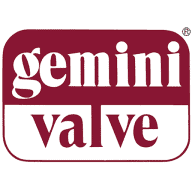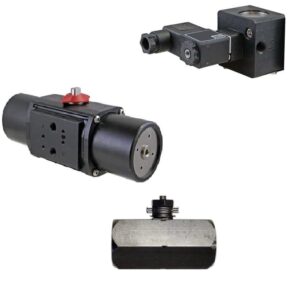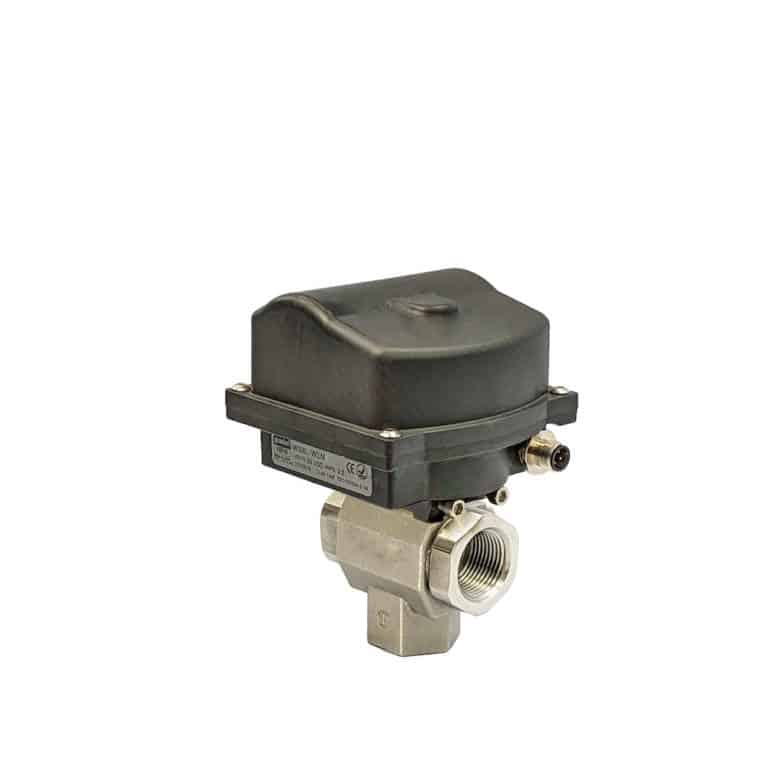Performance Automation Series; 316 stainless steel body with 316 stainless steel ball and stem ball valve. Seats are glass reinforced P.T.F.E. (Teflon®), Stem Seal Viton®. Pipe connections are NPT (National Pipe Taper) female screwed end. Temperature Range -20°F to 400°F (-29°C to 204°C). Valve Body Pressure Rating 1,000 psi C.W.P. (Cold Working Pressure) Maximum Pressure Differential 400 psi C.W.P. – also see Differential Pressure Temperature Chart). Also see Product Specifications which can be found at www.geminivalve.com. Products are marketed per Gemini Valve Standard Terms & Conditions. All Gemini Valve Products MADE IN USA.
Valve is operated by Double-Acting (Air to Open / Air to Close) Pneumatic Actuator which operates on 60-125 psi air supply with an cycle (index) time of 1/2 to 1 second depending on model and load. Temperature Rating -20°F to 350°F (-28.8°C to 176.6°C). Air connection is NAMUR / (2) 1/8” NPT female ports to enable direct NAMUR or remote solenoid valve piloting. Actuator body aluminum with Teflon® impregnated hard anodized surfaces. Hardware 300 Series Stainless Steel. Permanently lubricated – maintenance free. Visual Open / Close indicator. ISO Mounting for accessories including Limit Switch.
Controlling the valve
The -way ball valve is very well suited for automation. By replacing the handle with a Z-key, the valve can be electrically controlled or by pneumatic activation (NO, NC or DA).
The housing of the valve is available in Stainless Steel, Brass and normal steel.
T-Port & L-Port 3-Way Ball Valves
Three-way ball valves are most commonly configured with L-Port or T-Port flow patterns. The ball valve is drilled into a specific design, creating either an L- or T-shaped port.
Each design serves a specific function. An L-port valve draws media from multiple sources or diverts media between two different destinations. A T-port valve serves a very similar function, the main difference being that in the normal position the media will flow straight through from one side of the T to the other.
The T-port can also be configured to have media flow directly through the valve in position #1 and all ports open in position #2. An L-port valve cannot be configured to have all valve ports open simultaneously.




